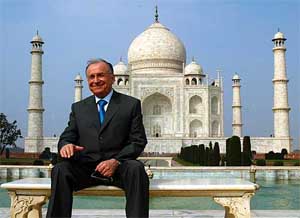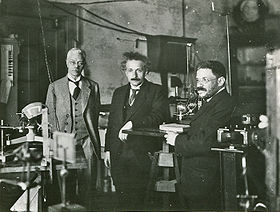Bone Thugs-n-Harmony is an
American rap group from
Cleveland, Ohio, best known for their high pace rapping style and harmonizing vocals. In 1997, the group was awarded the
Grammy Award for Best Rap Performance with their song "
Tha Crossroads." Since its conception in the early 1990s the group has been honored with numerous other awards.
Early Years Formed in the early 1990s, the group consisted of four members:
Krayzie Bone,
Layzie Bone,
Wish Bone and
Bizzy Bone.Their first album,
Faces of Death, was recorded under the name of B.O.N.E. Enterpri$e in early 1993. Shortly thereafter, Layzie Bone's elder brother,
Flesh-n-Bone, joined the group. Their career took off in 1993 after heading to
Los Angeles in search of famous producer and
N.W.A. member
Eazy-E. In hopes of securing a record deal, the group was given an audition over the phone receiving an unfulfilled promise from Eazy-E to call them back. Discovering that Eazy-E was performing back in their hometown of Cleveland, the group took a charter bus back hoping to have another chance, this time in person. This chance was given backstage as they auditioned for
Gangsta Dresta and later for Eazy-E. This resulted in them signing a contract with Eazy-E's
Ruthless Records.
Faces Of Death Ruthless Records Released in June 1994, the EP
Creepin on ah Come Up was Bone Thugs-n-Harmony's debut with Ruthless Records and its first introduction into super stardom. After a slow start that saw the album's success limited to
gangsta rap audiences, it broke through to the mainstream with the release of the singles "
Thuggish Ruggish Bone" and "
Foe tha Love of $," the second of which featured a verse by Eazy-E. The sound was raw and explicit, while the lyrics were violent and aggressive. Songs poured out feelings of anger against society for growing up on the violent and economically oppressed streets of
Cleveland. Videos for the mega hits "Foe tha Love of $" and "Thuggish Ruggish Bone" increased the group's reputation among audiences. Beats were supplied by
Kenny McCloud,
Rhythm D,
DJ Yella, and newcomer
DJ U-Neek. The album was later certified 4x platinum by the
RIAA.
Creepin on ah Come Up While
Creepin on ah Come Up's subject matter was focused almost entirely on
violent criminal activity,
E 1999 Eternal saw Bone diversify its content and musical stylings. It debuted at number one with 307,000 copies sold in its first week. The
G-funk beats were smoothed by
DJ U-Neek (with co-production from
Tony C and
Kenny McCloud). Like
Creepin on ah Come Up, a considerable portion of the album's concept was built upon violent subject matter, yet Bone proved its ability to incorporate deeper themes, as its songs dealt with more
spirituality and
occult mysticism.
E 1999 Eternal also introduced Bone's trademark "weed songs," tracks devoted entirely to the consumption of
marijuana. Eazy-E got the idea for the cover artwork from the apocalyptic movie
Terminator 2 as Bone, collectively, had a mental fixation that the world was going to end in 1999.
E 1999 Eternal remains Bone's most successful venture in terms of sales and notoriety, as it went on to sell more than 10 million copies worldwide.
In 1995, Bone was featured on
Russell Simmons'
The Show soundtrack album with a track titled "
Everyday Thang." It bears no resemblance and is not in any way related to the track with the same title on the
Faces of Death album. This track resembled many of the tracks on
E 1999 Eternal.
E 1999 Eternal In 1997, the group released the double-disc set
The Art of War, backed by the single "
Look into My Eyes", which also appeared on the
soundtrack of the film
Batman & Robin. The album saw Bone further explore a wide variety of subjects and styles, with even more focus on
God and
family and an overall more ambient, mellow sound. The group still incorporated violent
lyrics, though, with a large portion of the album dedicated to what they labeled "
clones" who claimed Bone had stolen their quick-tongued rapping style and vice-versa. The Chicago-based rap group
Crucial Conflict was targeted by name, with indirect disses thought to be aimed at
Twista,
Three Six Mafia, and
Do or Die. The album also included "
Thug Luv" with
Tupac Shakur. The album is also influenced by the book of the same name by author
Sun Tzu.
The Art of War philosophy is littered throughout the album. While the album had initial success, debuting at number one on the
Billboard 200 (with 394,000 copies sold in the first week), it failed to have much staying power. Besides "Look into My Eyes" (which charted at number four on the
Billboard Hot 100), the only other single was "
If I Could Teach the World", which won an
American Music Award(AMA). The group's efforts were further dampened by the absence of Bizzy Bone from the album's videos and large portions of the ensuing
tour and public appearances. This absence fueled rumors of a break-up. The album was certified 4x platinum by the RIAA (with each album sold counting as two units under the association's certification guidelines).
BTNHResurrection In 2000, member Flesh-n-Bone was sentenced to eleven years in prison for threatening his neighbor with an AK-47. Eligible for parole in 2008, he currently is housed in
Pleasant Valley State Prison in
Coalinga, California. In late 2001, the group returned to the studio to record their next release, Thug World Order. By February 2002, the supposedly overly-violent and political album was complete. The Thug World Order album saw a drastic change in subject matter and tone for the group. The lyrics were almost completely void of any violence, while a larger number of tracks focused on the group itself. In contrast, several songs originally intended to be included on the album that were leaked after its release portray a much different album. The album debuted at number twelve (selling 82,000 the first week) and quickly slipped off the charts. The album would fare better overseas, with the single "Home" (sampling the song "Take Me Home" by Phil Collins) climbing the charts in a number of countries, most notably the United Kingdom. Because of the success of this collaboration, the group named Phil Collins an honorary member, giving him the monicker of Chrome Bone. After years of problems with member Bizzy Bone, the group officially parted ways with Bizzy Bone after he performed intoxicated with the group at BB King's Blues Club in New York City on October 2002. They also, during this time, severed their embattled relationship with their Record label Ruthless Records in the post-Eazy-E regime under his widow Tomica Wright. In October 2003, Bizzy rejoined the group for the Wicked Wonka Tour with the Insane Clown Posse and soon recorded Bone Brothers, a duet album with Layzie Bone. Things quickly turned sour, though, as Bizzy Bone declined to tour in support of the album and contract negotiations between Bone Thugs-n-Harmony and Bizzy Bone with Full Surface Records broke down. After this and a number of other incidents, the group once again cut ties with Bizzy Bone in May 2005.
Thug World Order After Ruthless In September 2005,
DJ U-Neek released an internet-only
enhanced CD called
Bone 4 Life, featuring six new tracks produced by DJ U-Neek and a behind the scenes video. It was only available to order for a week.
Bone 4 Life Thug Stories, Bone Thugs-n-Harmony's sixth album, was recorded on
Koch Records and released in September 2006. It marked the first time Bone Thugs-n-Harmony recorded as a trio for a full album, as troubled former member Bizzy Bone was finally ousted. This album was the group's first full-release since 2002's
Thug World Order.
Thug Stories sold 38,000 in the first week and peaked at twenty-five on the
Billboard 200.
Thug Stories featured a slightly more mature style and the group leaned more heavily towards its harmonic roots than its "thug" origins.
Thug Stories Originally to be called
The Bone Thugs Story,
Strength and Loyalty's release date was
May 8,
2007. Being their first major album after an absence of nearly five years, the album debuted at number two on the
Billboard 200. The album contains guest-appearances by
Bow Wow,
Mariah Carey,
Yolanda Adams,
The Game,
will.i.am,
Akon,
Twista, and
Felecia. Producers include
Swizz Beatz,
Akon,
Nottz,
Jermaine Dupri,
will.i.am, and others. The executive producer of the album is
Swizz Beatz. Bone's new video "
I Tried" was launched on
March 7,
2007, their first single from the album
Strength and Loyalty, followed by the second single "Lil Love".
 Strength & Loyalty
Strength & Loyalty Bone also has movie coming out called, "
I Tried", which was originally named "What If..." The topic of the movie is how different the lives of Krayzie, Layzie, & Wish would have been if they never met Eazy-E. The cover of the DVD is on their official website.
Forthcoming film Perhaps the group's most important contribution to rap is their speedy, harmonizing
flow. While fast rapping has always had a
niche in the culture, Bone Thugs-n-Harmony certainly brought the style to the forefront.
Although 1996 was the peak of their popular appeal, Bone Thugs-n-Harmony still has a fairly large
cult following. They are and will be the only Group in history to have collaborated with
Big Punisher,
Notorious B.I.G.,
Eazy-E, and
2Pac while they were still alive.
In 2003, the group toured with the
Insane Clown Posse,
Tech N9ne, the
Kottonmouth Kings, and
Esham on the Wicked Wonka Tour. Once the tour was completed, a posse cut was recorded titled "Thug Pit".
From 2006 to the present, Bone Thugs-n-Harmony, especially Krayzie Bone, have continued their strong track record of collaborations and appearances on compilation albums. Krayzie Bone appeared on
Duets: The Final Chapter by
The Notorious B.I.G, the soundtrack from the
Antonio Banderas film
Take the Lead, and on
DJ Khaled's new album
Listennn... The Album. Bone Thugs-n-Harmony appeared with Eazy-E on the soundtrack to The Game's acting debut in the film
Waist Deep, and on
The Source Presents Fat Tape Vol. 1. The most successful was Krayzie Bone's appearance on
Chamillionaire's number-one single "
Ridin'". Krayzie Bone is featured on the most recent 2Pac album
Pac's Life on the song "Untouchable (Swizz Beatz remix)." Most collaborations, no matter how many members are featured, are credited as Bone Thugs-n-harmony.
Legacy and collaborations Known mostly for their flow rather than lyricism, Bone's style and technique can be described as melodic yet dark and aggressive. Their flow is often interwoven at a high speed melodic pace or slow harmonic pace. They also tend to ride the beat that they're rapping over. Sometimes there are very few choruses separating their verses from one another. In the beginning, circa
Faces of Death, Bone used a pseudo-
Jamaican patois delivery with their trademark style, though they rarely do this now. Bone's subject matter has both spiritual and occult undertones (e.g., "Hell Sent," "Intro," "Mr.Ouija," "Mr.Ouija 2" and "Da Introduction"). At first, their subject matter was almost always exclusively about violence and smoking
marijuana. Today, however, their subject matter includes other topics such as urban socio-political issues. Besides minor changes to subject matter and sound, their lyrical style, locution, and overall methodology remain intact.
Style and technique Main article: Bone Thugs-n-Harmony discography Discography Awards 1997 Bone Thugs-n-Harmony: Win for Best Rap Performance by a Duo or Group ("
Tha Crossroads")
2007 Krayzie Bone: Win for Best Rap Performance by a Duo or Group ("
Ridin' ")
Grammy Award 2006 Krayzie Bone: "Best Rap Video" (Ridin')
 MTV Video Music Award
MTV Video Music Award 1998 Krayzie Bone: "Favorite Rap/Hip-Hop Artist"
Ozone Awards
 Harry Potter books
Harry Potter books Harry Potter books
Harry Potter books

 History
History


 District court judgeship
District court judgeship Japan
Japan
 Current roster (as of May 9, 2007)
Current roster (as of May 9, 2007) Fault types
Fault types Science wars in Social Text
Science wars in Social Text

 The importance of Zeeman's discovery became soon apparent. It confirmed Lorentz' prediction about the polarization of light emitted in the presence of a magnetic field. Because of Zeeman's work, it appeared that the oscillating particles that according to Lorentz were the source of light emission were negatively charged, and were a thousandfold lighter than the hydrogen atom. This conclusion was reached well before
The importance of Zeeman's discovery became soon apparent. It confirmed Lorentz' prediction about the polarization of light emitted in the presence of a magnetic field. Because of Zeeman's work, it appeared that the oscillating particles that according to Lorentz were the source of light emission were negatively charged, and were a thousandfold lighter than the hydrogen atom. This conclusion was reached well before 

 Strength & Loyalty
Strength & Loyalty MTV Video Music Award
MTV Video Music Award